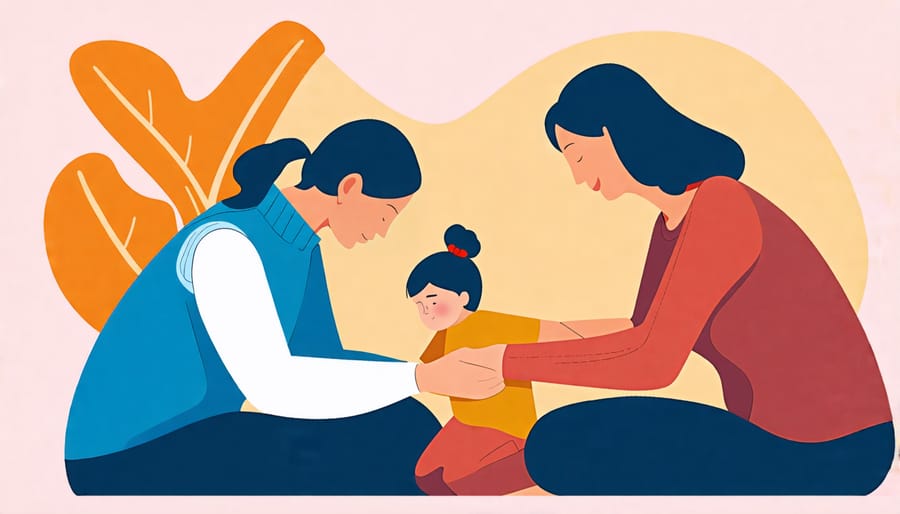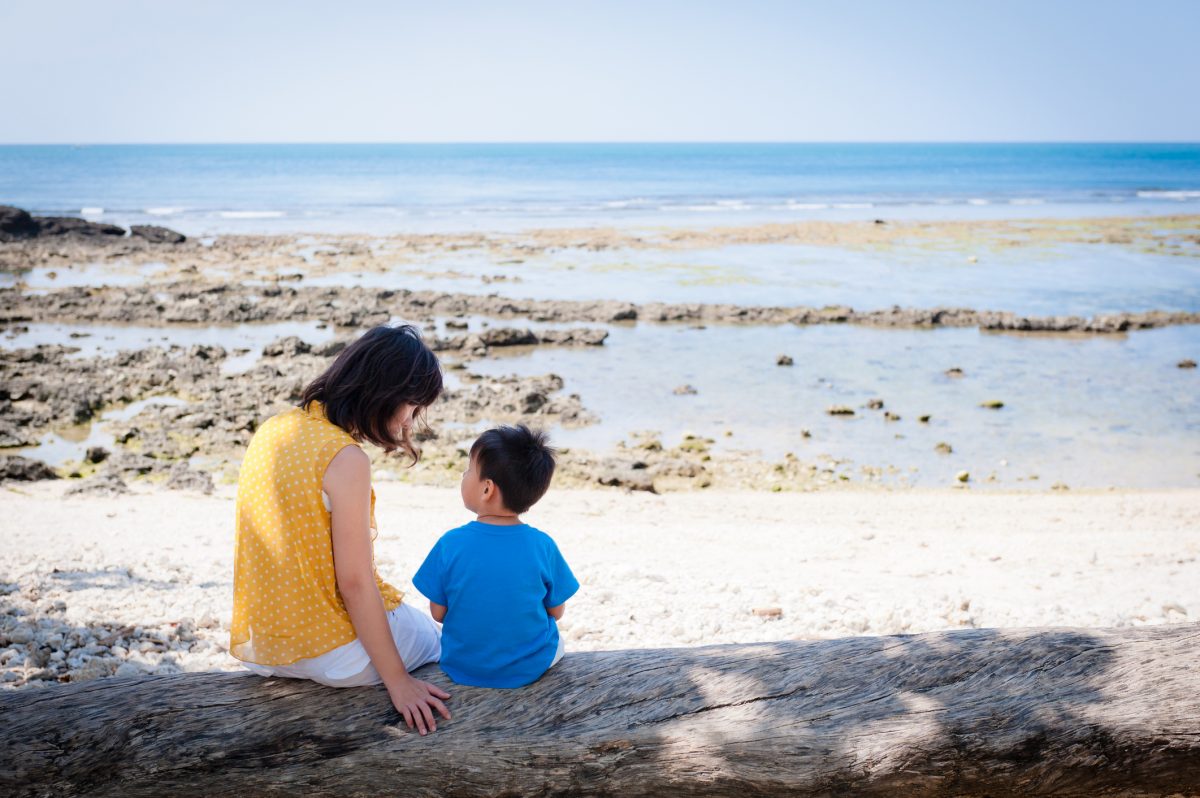Recognize the signs of trauma by observing changes in behavior, such as anxiety or withdrawal, to intervene early. Foster a supportive environment by maintaining open communication and validation, helping children express feelings safely. Engage with mental health professionals to assess and develop personalized coping strategies for healing and growth. Encourage resilience by teaching mindfulness and stress-reduction techniques to build emotional stability and self-regulation. Prioritize education on trauma’s impact to empower both children and adults in taking constructive steps toward healing and recovery.
Understanding Childhood Trauma
Types of Childhood Trauma
Childhood trauma can manifest in various forms, each leaving a profound impact on a child’s mental health. Physical trauma includes any form of physical harm or injury, which can lead to anxiety and fear. Emotional trauma, often arising from verbal abuse or severe criticism, can erode a child’s self-esteem and trust in others. Neglect, a more silent form of trauma, occurs when a child’s basic needs for love, affection, and care are not met, potentially leading to feelings of worthlessness and insecurity. Understanding these different types is crucial in providing the right support and fostering an environment where children can heal and thrive.

Risk Factors for Experiencing Trauma
Several factors can increase the likelihood of a child experiencing trauma. Family dynamics play a crucial role in a child’s emotional well-being. For instance, living in a home with domestic violence, substance abuse, or neglect may heighten the risk of traumatic experiences. Children often look to their caregivers for support, and when this support is inconsistent or harmful, it can leave lasting impressions on a child’s psyche.
Socio-economic status also significantly impacts exposure to trauma. Families with fewer resources may experience stressors such as housing instability, food insecurity, and limited access to healthcare, which can contribute to traumatic situations. These challenges can strain familial relationships and reduce a child’s sense of security.
Moreover, environmental factors like living in high-crime neighborhoods or experiencing community violence can shape a child’s perception of safety. Recognizing these risk factors can help parents, teachers, and healthcare professionals create supportive environments that mitigate the impact of trauma on a child’s mental health. By fostering awareness, we can work collectively to cushion the effects of adverse experiences on children.
Short-Term Psychological Effects
Emotional and Behavioral Responses
Childhood trauma can deeply impact a young person’s emotional landscape, often manifesting through heightened fear, anxiety, and behavioral challenges. Many children who have experienced trauma may express overwhelming feelings of fear, worrying about their safety or the safety of loved ones. This can lead to anxiety, which may present as restlessness, difficulty concentrating, or even physical symptoms like stomachaches. Behavioral responses are equally significant, with some children displaying increased irritability, aggression, or withdrawal from previously enjoyed activities. These changes in behavior might be a child’s way of coping with distress they cannot yet articulate.
Understanding these emotional and behavioral responses is crucial for effectively supporting affected children. When adults recognize these reactions as potential signs of trauma, they can play a vital role in helping children heal. By fostering environments that nurture open communication and offering consistent support, we can help shatter the stigma around mental health, ensuring that no child feels isolated in their experiences.

Impact on Cognitive Functioning
Childhood trauma can profoundly impact a child’s cognitive functioning, often leading to challenges in attention, learning, and memory. When children experience trauma, their brains may remain in a heightened state of stress, making it difficult for them to focus on tasks and retain information. Imagine trying to pay attention in class while constantly on edge—it’s a real struggle for kids dealing with trauma.
Research highlights that trauma can alter the brain’s structure, particularly areas involved in critical thinking and memory. This means that learning new concepts or recalling what was learned might not come easily. Teachers may notice that these children might seem distracted or forgetful not because they’re not trying, but because their brains are coping with past experiences. It’s vital to approach these challenges with empathy and understanding. Providing supportive environments where children feel safe and validated can help improve cognitive functioning over time, encouraging them to thrive in their educational journeys.
Long-Term Psychological Effects
Chronic Mental Health Issues
Childhood trauma can lay the groundwork for chronic mental health issues that persist well into adulthood, impacting one’s ability to build a healthy relationship with food and other critical life aspects. Among these lasting effects, depression and post-traumatic stress disorder (PTSD) are notably prevalent. Imagine a child who navigates life under a constant cloud of sadness, battling feelings of worthlessness commonly associated with depression. These emotions can stifle their enthusiasm for activities they once loved, creating a cycle that is hard to break. Similarly, PTSD can haunt those who have endured trauma, causing them to relive terrifying experiences through intrusive thoughts or vivid nightmares. This overwhelming anxiety can disrupt their daily life, making simple tasks seem daunting.
Parents, teachers, and healthcare professionals play a crucial role in recognizing these signs early and providing compassionate support. Listening to a child’s story, seeking expert opinions, and advocating for appropriate interventions can make a significant difference. Early action can guide them toward resilience and healing, offering them hope for a brighter future where the shadow of trauma does not define their journey. Let’s foster an environment where children feel safe to express their feelings, knowing they are understood and supported.
Interpersonal Relationships
Childhood trauma can deeply affect interpersonal relationships, making it challenging for individuals to connect with family, friends, or colleagues. Traumatized children might struggle with trust, resulting in difficulties forming close bonds. At home, this can manifest as tension or distance, impacting family dynamics. In friendships, children may appear withdrawn or overly dependent, seeking reassurance while fearing betrayal. When these children enter the workplace as adults, the lingering effects might hinder collaboration, leading to misunderstandings or conflicts. Embracing empathy and open communication, along with professional support, can foster healing and improve these crucial relationships over time.
Self-Perception and Identity
Childhood trauma can significantly affect how children see themselves and their place in the world. These experiences often lead to issues with self-esteem and identity formation. As children internalize trauma, they might develop negative self-perceptions, feeling unworthy or inadequate. This can hinder their ability to understand who they are, as they might see themselves primarily through the lens of their painful experiences. Expert opinions suggest that trauma can create a cycle of self-doubt, where children struggle to form a stable sense of identity. Personal stories of healing and resilience highlight the importance of support and understanding from caregivers and professionals to rebuild a positive self-concept. Compassionate interventions can help children navigate their complex feelings and foster a healthier sense of identity.
Coping Mechanisms and Support Systems
Role of Parents and Caregivers
Parents and caregivers play a vital role in helping children heal from trauma. Creating a safe and nurturing environment is crucial for recovery. Start by maintaining open lines of communication, where children feel heard and respected. Encourage them to express their feelings and validate their emotions, reassuring them it’s okay to feel what they are experiencing. It’s important to listen without judgement and provide consistent support.
Watch for signs that your child might be struggling with their mental health, such as changes in behavior or mood. If you’re unsure, learning more about recognizing PTSD can be a helpful resource. Including children in activities that promote relaxation and positive relationships, like playing games or sharing meals, can also aid in their healing journey.
Finally, reach out to professionals when necessary. Therapists and counselors trained in trauma can offer specialized guidance and support. Remember, your empathy and patience are invaluable as your child navigates their path to healing.

Professional Support and Therapy
If you or someone you know is struggling with the psychological effects of childhood trauma, it’s important to understand that professional help is a compassionate step towards healing. Consider seeking support when signs of distress, such as anxiety, depression, or difficulties in daily functioning, persist. A mental health professional can offer a safe space to explore these feelings and experiences.
Therapeutic approaches often tailored to childhood trauma include cognitive-behavioral therapy (CBT), which helps individuals reshape negative thought patterns, and trauma-focused therapies like EMDR (Eye Movement Desensitization and Reprocessing) that work to process traumatic memories. Play therapy can be particularly effective for younger children, allowing them to express emotions and experiences non-verbally.
An inspiring story shared by a parent is about their daughter finding her voice through therapy, illustrating hope and resilience. Expert insights emphasize the importance of early intervention, suggesting that the sooner children receive help, the more positive their outcomes can be. Remember, seeking help is a courageous act and an invaluable gift to those affected by trauma.
Prevention and Awareness
Creating Safe Environments
Creating a safe and supportive environment for children is essential to help them heal from trauma and build resilience. Start by fostering open communication; encourage children to express their feelings and listen without judgment. Establishing routines can provide a sense of stability, which is vital for children who’ve experienced trauma. Whether you’re a parent, teacher, or healthcare professional, showing consistent affection and support can make a world of difference. Bringing in elements of play and creativity allows children a healthy outlet to process their experiences. Consider sharing personal stories of overcoming challenges, showing them they’re not alone. Furthermore, integrating expert opinions can reassure them of the normalcy of emotions after trauma. A collaborative approach within communities ensures that all children find a haven to feel secure and valued, reinforcing their path to recovery.
Education and Advocacy
Educating communities about the psychological effects of childhood trauma is vital for fostering a supportive environment for affected children. By understanding the signs and impacts of trauma, parents, teachers, and healthcare professionals can better recognize and address the needs of children who have experienced it. Advocacy plays a crucial role in child protection by promoting policies and practices that prevent trauma and ensure early intervention. Personal stories from those who have overcome childhood trauma, along with expert opinions, can be powerful tools to raise awareness and empathy. These narratives not only inform but also inspire community action, highlighting the importance of collective efforts to safeguard children’s mental well-being. Equipping our communities with knowledge and compassion transforms lives, creating safer spaces for healing and growth.
Conclusion
Addressing childhood trauma is crucial for promoting mental well-being in both children and adults. The experiences we have during our formative years significantly shape how we perceive the world and ourselves. Trauma, whether it stems from abuse, neglect, or loss, can leave deep and lasting scars on a child’s psyche. Through the compassionate stories shared by those who have experienced trauma, we understand that the path to healing is varied and deeply personal. As parents, teachers, and healthcare professionals, it’s important to recognize the signs of trauma and approach affected children with empathy and support.
Expert opinions emphasize that early intervention can make a significant difference in a child’s mental health trajectory. By fostering environments where children feel safe and heard, we can mitigate some of the long-term impacts of trauma. Engaging in open conversations about emotions and providing access to resources like counseling and therapy are vital steps in this healing journey. Let’s continue to prioritize the mental well-being of our children by being proactive, informed, and compassionate allies. Every child deserves a future unburdened by the shadows of past trauma, and together, we can work towards making this a reality.







